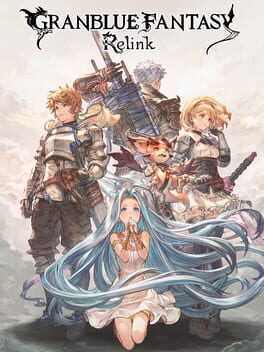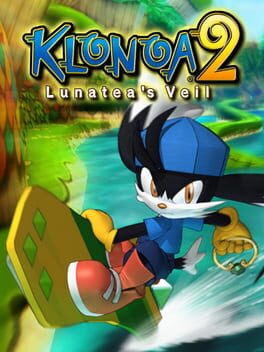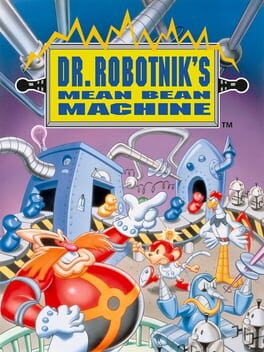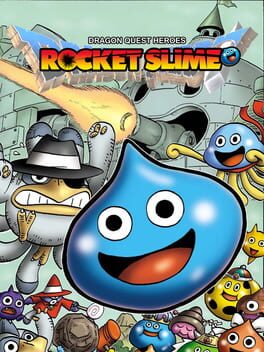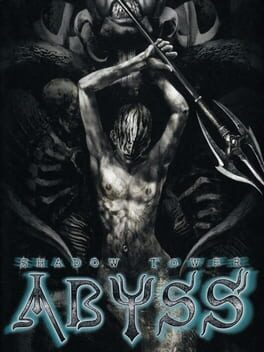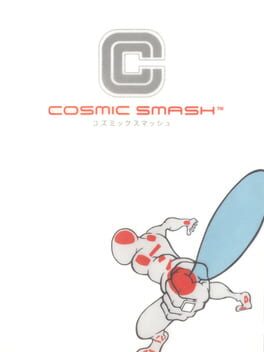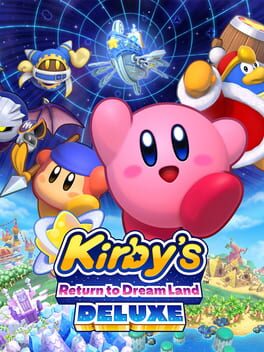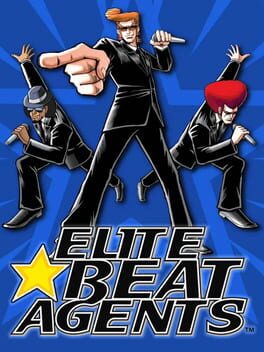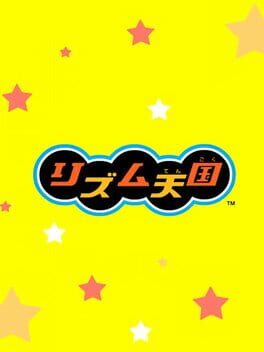SlapOnToast
1168 Reviews liked by SlapOnToast
they turned granblue into an action rpg they turned granblue into an action rpg
only thing it's really missing is danchou's job system from the mobile game, I can see why they dropped it but if they had sprinkled a little more FFIII/V in here it would be even more insane, similar feeling towards summons being mechanically present but I feel like SBA fulfills a similar enough purpose. Only really one mission where I feel like they missed, otherwise it's all bangers, lots of fun bosses and I find it very easy to draw parallels to a certain Kingdom Hearts the Second (also peak). Honestly even just hitting the ground and getting into that opening mission, hearing granblue music in a real ass RPG had me feeling some raw emotions for a moment
also it's got monster hunter lobbies and postgame quest progression
simply put, it's peak, rebirth and destruction my dudes
only thing it's really missing is danchou's job system from the mobile game, I can see why they dropped it but if they had sprinkled a little more FFIII/V in here it would be even more insane, similar feeling towards summons being mechanically present but I feel like SBA fulfills a similar enough purpose. Only really one mission where I feel like they missed, otherwise it's all bangers, lots of fun bosses and I find it very easy to draw parallels to a certain Kingdom Hearts the Second (also peak). Honestly even just hitting the ground and getting into that opening mission, hearing granblue music in a real ass RPG had me feeling some raw emotions for a moment
also it's got monster hunter lobbies and postgame quest progression
simply put, it's peak, rebirth and destruction my dudes
Issue 13 of the Official UK PS2 Magazine, published November 2001, came with a demo disk containing a handful of levels from the then soon-to-be-released Klonoa 2. Playing this demo tens of times as a wean would be my only exposure to Klonoa 2 for nearly 23 years. Despite Klonoa 1 being a childhood favourite, and a formative cornerstone that had no doubt informed my tastes and passion for videogames; I only managed to get around to Klonoa 2 proper earlier today. I’d have gotten around to it sooner, were it not for the fact that Klonoa 2 was one of a few outlier cases of games that emulated horribly on PCSX2. Fugged to the nines until relatively recent revamps in compatibility were instated. Aptly enough, it was so surreal playing the levels from the demo once again - it all came flooding back like fleeting memories returning to me from a dream fighting to be recalled.
Soberingly, I don’t think I’m anywhere near as red hot on this game as I still am with Klonoa 1. Perhaps K2 had spent too long being gassed up, cooking and stirring in my head as an elusive cryptid. On many fundamental levels I think this is absolutely beautiful work. Demonstrating incredible emotional maturity in its final hours of the narrative representative of a slightly aged Klonoa, through heartfelt writing and vocal performances. A soundtrack brimming with disparate ideas and delivering them w/ confidence, grappling a wide array of influences and energies. For such an early PS2 game, these cutscenes are composited so brilliantly, giving characters illustrative frames to act in, staging the environments in striking ways… we still get things like this wrong!! I particularly love how the camera would move during boss fights, not only tracking the boss’ movements but also working to sell their scale and let them act on the stage! Incredible level design too, making great use of unique stage quirks to impose puzzle-like ordeals - the colour changing enemy was an enlightened addition. Klonoa 2 is the proud owner of an amazing final level, too - a true sum of all of it’s works with stellar level design, and thoughtful use of music and visuals.
I’m less keen on how weak a handful of the stages in the game are, both visually and in terms of level design. I’m even less keen on the repetition the game will impose on you, it’s not enough that they’ll re-use levels at certain points; you’d also need to run a few laps around some levels as you collect keys/activate elevators and such. It’s a bit more draining than it’s necessarily worth, in my humble, made worse due to the fact that levels in this game are wildly long and can be a bit plain. If I had to be brutally honest, I think Klonoa 1 does a better job at conceptualising its levels around its many disparate worlds, wrapping around and winding between the background geometry in a way that makes it all the more satisfying to explore. It would be nice if Klonoa himself had more of an active role in the story than an optimistic errand boy. It stands in stark contrast to the first Klonoa game where he’s incredibly emotionally invested in the proceedings, but I’m sure the plan here was to demonstrate that he’s an older and wiser character this time around, more clear on his Unico-like role in life and letting the world speak for itself. There’s tremendous merit to that and I can’t help but feel more of a relation to a Klonoa who isn’t thrashing out at the world when playtime is over, but I’m a theatre kid at heart I suppose oh god.
Admittedly I played Klonoa 2 in a bit of a goofy way, where I'd finish a level, and then skim a longplay of the same level from the 2022 remaster for comparison. I can only be honest here, but I think both of them have merit! The remaster fucks up the vibes in key locations with awful colour choices, blown out bloom and weird fullbright lighting. The level in sheer darkness, necessitating you to use a limited light resource to be able to see the geometry is ruined in the remaster because it’s already so well lit you don’t even need the light spirits! But I think the additions to the geometry and character models made in the remaster are really well considered, fleshing out the world enough for them to feel closer to realisation without diminishing their overt dream-like quality. My annoying brainwyrms are expertly trained to hate the aesthetic haemorrhaging that occurs from changes and concessions these remasters tend to make, but my ideal Klonoa 2 sits somewhere between the two versions..... (I want to know what the remaster changed the weird Full Metal Jacket cypher into)
Soberingly, I don’t think I’m anywhere near as red hot on this game as I still am with Klonoa 1. Perhaps K2 had spent too long being gassed up, cooking and stirring in my head as an elusive cryptid. On many fundamental levels I think this is absolutely beautiful work. Demonstrating incredible emotional maturity in its final hours of the narrative representative of a slightly aged Klonoa, through heartfelt writing and vocal performances. A soundtrack brimming with disparate ideas and delivering them w/ confidence, grappling a wide array of influences and energies. For such an early PS2 game, these cutscenes are composited so brilliantly, giving characters illustrative frames to act in, staging the environments in striking ways… we still get things like this wrong!! I particularly love how the camera would move during boss fights, not only tracking the boss’ movements but also working to sell their scale and let them act on the stage! Incredible level design too, making great use of unique stage quirks to impose puzzle-like ordeals - the colour changing enemy was an enlightened addition. Klonoa 2 is the proud owner of an amazing final level, too - a true sum of all of it’s works with stellar level design, and thoughtful use of music and visuals.
I’m less keen on how weak a handful of the stages in the game are, both visually and in terms of level design. I’m even less keen on the repetition the game will impose on you, it’s not enough that they’ll re-use levels at certain points; you’d also need to run a few laps around some levels as you collect keys/activate elevators and such. It’s a bit more draining than it’s necessarily worth, in my humble, made worse due to the fact that levels in this game are wildly long and can be a bit plain. If I had to be brutally honest, I think Klonoa 1 does a better job at conceptualising its levels around its many disparate worlds, wrapping around and winding between the background geometry in a way that makes it all the more satisfying to explore. It would be nice if Klonoa himself had more of an active role in the story than an optimistic errand boy. It stands in stark contrast to the first Klonoa game where he’s incredibly emotionally invested in the proceedings, but I’m sure the plan here was to demonstrate that he’s an older and wiser character this time around, more clear on his Unico-like role in life and letting the world speak for itself. There’s tremendous merit to that and I can’t help but feel more of a relation to a Klonoa who isn’t thrashing out at the world when playtime is over, but I’m a theatre kid at heart I suppose oh god.
Admittedly I played Klonoa 2 in a bit of a goofy way, where I'd finish a level, and then skim a longplay of the same level from the 2022 remaster for comparison. I can only be honest here, but I think both of them have merit! The remaster fucks up the vibes in key locations with awful colour choices, blown out bloom and weird fullbright lighting. The level in sheer darkness, necessitating you to use a limited light resource to be able to see the geometry is ruined in the remaster because it’s already so well lit you don’t even need the light spirits! But I think the additions to the geometry and character models made in the remaster are really well considered, fleshing out the world enough for them to feel closer to realisation without diminishing their overt dream-like quality. My annoying brainwyrms are expertly trained to hate the aesthetic haemorrhaging that occurs from changes and concessions these remasters tend to make, but my ideal Klonoa 2 sits somewhere between the two versions..... (I want to know what the remaster changed the weird Full Metal Jacket cypher into)
I feel like everyone's got some random game they absolutely love that no one else even knows about and for me that's this game. This is a game that is built of seemingly completely disparate parts; Capcom-era 2D Zelda exploration, Pikmin's methodical time-sensitive collection, a deck builder tank battle thing, a town builder.. all of these elements work in perfect harmony to make Rocket Slime such a (s)ub(lime), satisfying experience.
Super Mario World
1990
Shadow Tower: Abyss
2003
holy shit, holy shit, holy shit, why are video games so GOOD
I haven't played any of the other games in the King's Field metaseries (yet). I got here mostly because a lot of people were going around recommending it to everyone who liked Lunacid, last year's really good indie tribute to them. The influence is impossible to miss, but Lunacid is still going for quite a different mood from the source material; Shadow Tower: Abyss is a lot less friendly and nostalgic, and it's even more atmospheric and mysterious--perhaps the most so of any game I've ever played.
It's kind of amazing just how strong of a case it makes for art direction over graphical fidelity, and that's coming from someone who's been playing that tune faithfully for decades. Fromsoft was still dealing in the low budget range in the PS2 era, but even by their standards... let's just say you could show me quite a few screenshots of this game telling me it was on the PS1 before I got suspicious. It's not even like it's a really early PS2 game, 2003 was around the middle of the console's lifespan.
And yet, however angular the models and crispy the textures, and despite its world and inhabitants often being deliberately grotesque, Abyss's overall effect manages to be hauntingly beautiful. The environments are highly varied, but I don't think I'll ever get the sort of main hub area out of my mind. You walk around on earthy platforms suspended high in a vast, pitch-dark cavern, lit neon green by sources clearly neither natural nor manmade, populated by bizarre creatures that just stare at you with obvious distrust and speak to you either in cryptic, just-short-of-hostile sentence fragments or not at all, and all the time you'll periodically hear strange, loud noises that seem to come from everywhere and nowhere. Like Jesus CHRIST, guys, leave some cool spooky vibes for literally every other game in the world! There are poor Metroidvanias starving in the Epic Store!
But the enigma of this game goes beyond the aching need to see more of its fucked up world. I finished it, and there are very few questions I could possibly answer about its core RPG mechanics. The controls and UI are, affectionately, riddled with retrojank and nothing in the game explains itself even a little beyond item descriptions that spare maybe five words for the purpose. There's no map aside from the occasional crude one scrawled on a wall, and the level design gets labrynthine. You can full heal by sacrificing a piece of equipment at certain spots, and you repair equipment by sacrificing some of your health at others. There are items I picked up that I never figured out any use for at all. What the hell kind of stat is Solvent? What's the difference between Mind and Mentality? What do these status effects actually do? Okay, you have a carrying weight capacity and if you go over it it slows you down, that's perfectly basic, but I can't seem to drop items so I guess I'm just in slow-mo until I get back to the little shop node and pawn some things off, might as well keep picking up looh my god I'm moving even slower now and TAKING A SHITLOAD OF DAMAGE OVER TIME WHAT--
I'm not usually a "don't use a guide" kind of girl, but seriously, don't try to use a guide. I'm not convinced you'll find one that answers a lot of these questions, anyway. The game is honestly, and surprisingly, not super hard as long as you stock up on healing potions and watch the extremely fragile durability of your gear. You don't need to optimize, and it's more unnerving and intriguing than frustrating to get lost in these levels. Combat is extremely basic aside from a cool dismemberment mechanic (most enemies will not necessarily die if you cut off their heads, fun detail!), but that's because it's not the main draw. The game is also pretty short, maybe a ten hour joint or so.
Play Shadow Tower: Abyss. I can be cagey about actually universally recommending games since my tastes can run to the esoteric and janky, and that's extremely the case here, but I don't think that does anything but enhance the experience. If you have literally any interest in dungeon crawlers or surreal, dark fantasy as a genre or aesthetic, play it. You deserve to give this game a serious try as much as the game deserves to be a household name.
I haven't played any of the other games in the King's Field metaseries (yet). I got here mostly because a lot of people were going around recommending it to everyone who liked Lunacid, last year's really good indie tribute to them. The influence is impossible to miss, but Lunacid is still going for quite a different mood from the source material; Shadow Tower: Abyss is a lot less friendly and nostalgic, and it's even more atmospheric and mysterious--perhaps the most so of any game I've ever played.
It's kind of amazing just how strong of a case it makes for art direction over graphical fidelity, and that's coming from someone who's been playing that tune faithfully for decades. Fromsoft was still dealing in the low budget range in the PS2 era, but even by their standards... let's just say you could show me quite a few screenshots of this game telling me it was on the PS1 before I got suspicious. It's not even like it's a really early PS2 game, 2003 was around the middle of the console's lifespan.
And yet, however angular the models and crispy the textures, and despite its world and inhabitants often being deliberately grotesque, Abyss's overall effect manages to be hauntingly beautiful. The environments are highly varied, but I don't think I'll ever get the sort of main hub area out of my mind. You walk around on earthy platforms suspended high in a vast, pitch-dark cavern, lit neon green by sources clearly neither natural nor manmade, populated by bizarre creatures that just stare at you with obvious distrust and speak to you either in cryptic, just-short-of-hostile sentence fragments or not at all, and all the time you'll periodically hear strange, loud noises that seem to come from everywhere and nowhere. Like Jesus CHRIST, guys, leave some cool spooky vibes for literally every other game in the world! There are poor Metroidvanias starving in the Epic Store!
But the enigma of this game goes beyond the aching need to see more of its fucked up world. I finished it, and there are very few questions I could possibly answer about its core RPG mechanics. The controls and UI are, affectionately, riddled with retrojank and nothing in the game explains itself even a little beyond item descriptions that spare maybe five words for the purpose. There's no map aside from the occasional crude one scrawled on a wall, and the level design gets labrynthine. You can full heal by sacrificing a piece of equipment at certain spots, and you repair equipment by sacrificing some of your health at others. There are items I picked up that I never figured out any use for at all. What the hell kind of stat is Solvent? What's the difference between Mind and Mentality? What do these status effects actually do? Okay, you have a carrying weight capacity and if you go over it it slows you down, that's perfectly basic, but I can't seem to drop items so I guess I'm just in slow-mo until I get back to the little shop node and pawn some things off, might as well keep picking up looh my god I'm moving even slower now and TAKING A SHITLOAD OF DAMAGE OVER TIME WHAT--
I'm not usually a "don't use a guide" kind of girl, but seriously, don't try to use a guide. I'm not convinced you'll find one that answers a lot of these questions, anyway. The game is honestly, and surprisingly, not super hard as long as you stock up on healing potions and watch the extremely fragile durability of your gear. You don't need to optimize, and it's more unnerving and intriguing than frustrating to get lost in these levels. Combat is extremely basic aside from a cool dismemberment mechanic (most enemies will not necessarily die if you cut off their heads, fun detail!), but that's because it's not the main draw. The game is also pretty short, maybe a ten hour joint or so.
Play Shadow Tower: Abyss. I can be cagey about actually universally recommending games since my tastes can run to the esoteric and janky, and that's extremely the case here, but I don't think that does anything but enhance the experience. If you have literally any interest in dungeon crawlers or surreal, dark fantasy as a genre or aesthetic, play it. You deserve to give this game a serious try as much as the game deserves to be a household name.
Kamaitachi no Yoru
1994
Masterpiece obsession simulator. A game that invites the mind to spiral and to be consumed, that encourages paranoid uncertainty. Taking the shin-honkaku (new traditionalist) mystery into a new medium, the game obsesses over its own artifice and form, twisting what should be a classic whodunnit into a bold post-modern labyrinth of different genres, meta-reflections, and player implications. A game that feels like no matter how much you dig, there is no bottom. Even when you "beat" the game, solve the mystery, it only reveals more to you and in turn uncovers more questions.
What is at the bottom of Kamaitachi no Yoru? Strip it all back, find its heart, and what exactly is this game? That is the real mystery. And it's a mystery you could spend a lifetime trying to solve.
More thoughts here
What is at the bottom of Kamaitachi no Yoru? Strip it all back, find its heart, and what exactly is this game? That is the real mystery. And it's a mystery you could spend a lifetime trying to solve.
More thoughts here
This review contains spoilers
SOULLESS. Combat feels awful compared to NMH; with the combination of attacking being way more float-y, stance switching feeling less responsive, and enemies feeling a lot cheaper by being able to just knock you down and keep wailing on you if you get hit by some uninterruptible attacks, it just sucks the fun out of the game. The few good bosses are only alright, and are only really notable because they stand above everything else in the game. The side jobs completely miss the point of the original, and because there's no longer an entry fee for ranked fights, they're pretty much useless to do after paying for all of the training at the gym. The gym minigames are lame. People say the soundtrack carries this game but I disagree: there are only really a couple notable tracks - anytime I really noticed the music were in those cases, or when the game just reused music from the first game. There are also significant spans of gameplay where there just isn't any music at all. So much of the game fails to impress and the stale as fuck final boss and lacklustre ending really just feel like a kick in the nuts at the end of it all. At least it's less than half the length of the first game. (according to my playtime at least.)
But also it has the Jeane minigames and it's awesome because of that so nvm.
But also it has the Jeane minigames and it's awesome because of that so nvm.
Cosmic Smash
2001
cosmic smash sets the tone.
sonic adventure was a system seller, a response to nintendo's own 3D platformer which was sm64. however, games like Rez, L.O.L., Roommania and most importantly Cosmic Smash were political statements. it was a response not to one game but to the industry as a whole. that was sega saying "we are not afraid to experiment, and look at what that sentiment birthed".
sega gave their geniuses the platform and opportunity to shine. without worrying about money and profit, they allowed for odd and questionable ideas to become fully fletched experiences and the result was one of the best libraries of any videogame console ever. more importantly to this review is that this push of unadulterared >art< resulted in a strong and firm sense of style.
when people think of Y2K aesthetics, they're thinking of the dreamcast. they're thinking of Space Channel 5. they're thinking of Tomoko Sasaki's Serani Poji. they're thinking of Rez. but moreover, they're thinking exactly of Cosmic Smash.
a game that would give the guy who created VIDEOBALL a field day, a simple and finite one-player digital sport that gives the player set challenges that they can choose to overcome with whatever moviments they like. there's a time limit, but you don't need to worry about that when you already know how to control your character. it's ok, you'll make it. the challenges get trickier, but you get stronger, you create muscle memory and your own strategies to each stage. eventually you get a game over -- or you win, who knows -- and then, you think, "i'm gonna do it again".
all of that, of course, coated under the most clear cut and transparent display of what people would later call "Y2K aesthetics". so much in fact that it seems weird to think of cosmic smash as a part of the era and not the trend setter itself. the music, the textures, the lines, the minimalism, even the game design itself, all reek of the turn of the century. it's a more contained and quiet version of what Rez was doing, so it ends up being less eye catching but still beautiful. its minimalism also contrasts Rez's intricate design and artistic execution, being the exact opposite extreme, so it's sort of the anti-rez.
cosmic smash is an era defining statement, a tone-setter that feels like the cherry on top of the dreamcast library. anyone could play this, and everyone should.
sonic adventure was a system seller, a response to nintendo's own 3D platformer which was sm64. however, games like Rez, L.O.L., Roommania and most importantly Cosmic Smash were political statements. it was a response not to one game but to the industry as a whole. that was sega saying "we are not afraid to experiment, and look at what that sentiment birthed".
sega gave their geniuses the platform and opportunity to shine. without worrying about money and profit, they allowed for odd and questionable ideas to become fully fletched experiences and the result was one of the best libraries of any videogame console ever. more importantly to this review is that this push of unadulterared >art< resulted in a strong and firm sense of style.
when people think of Y2K aesthetics, they're thinking of the dreamcast. they're thinking of Space Channel 5. they're thinking of Tomoko Sasaki's Serani Poji. they're thinking of Rez. but moreover, they're thinking exactly of Cosmic Smash.
a game that would give the guy who created VIDEOBALL a field day, a simple and finite one-player digital sport that gives the player set challenges that they can choose to overcome with whatever moviments they like. there's a time limit, but you don't need to worry about that when you already know how to control your character. it's ok, you'll make it. the challenges get trickier, but you get stronger, you create muscle memory and your own strategies to each stage. eventually you get a game over -- or you win, who knows -- and then, you think, "i'm gonna do it again".
all of that, of course, coated under the most clear cut and transparent display of what people would later call "Y2K aesthetics". so much in fact that it seems weird to think of cosmic smash as a part of the era and not the trend setter itself. the music, the textures, the lines, the minimalism, even the game design itself, all reek of the turn of the century. it's a more contained and quiet version of what Rez was doing, so it ends up being less eye catching but still beautiful. its minimalism also contrasts Rez's intricate design and artistic execution, being the exact opposite extreme, so it's sort of the anti-rez.
cosmic smash is an era defining statement, a tone-setter that feels like the cherry on top of the dreamcast library. anyone could play this, and everyone should.
Pop-Up Kirby is officially...found media! I enjoy Return to Dream Land back on the Wii, even finished it when I rented it from Blockbuster with my brother. Those were fun days as a kid... This truly was Kirby's return after a decade of Super Star's style left to sit there other than the DS remake. I plan to try the epilogue mode soon, but the minigame mode is a real treat of fanservice!
It's fascinating just how far the Kirby GCN iceberg goes. Once a late GameCube title canned and moved onto the Wii for a 3D action game. Then restarted development and shifted to a 2D pop-up book style game, which eventually became the game we know today. Assets reused for Smash Bros Brawl, Subspace possibly being inspired by Kirby GCN, and beta songs from all 3 iterations of Return to Dream Land. You can hear a specific motif that was truly made for Pop-Up Kirby and GCN, like yeah this totally would fit a storybook Kirby game. All of those assets were in the Wii game and still in this Switch remake, it's kinda crazy! This is just my space to ramble about Kirby GCN cuz it looked so damn cool...
(Edit: 2/13/24) Magalor Epilogue is a fun mode that adds some extra challenge to the mix. I like the moveset, upgrades and action focused level design a lot. I wish I could have tried it in co-op, but it’s a good, short experience in single player.
It's fascinating just how far the Kirby GCN iceberg goes. Once a late GameCube title canned and moved onto the Wii for a 3D action game. Then restarted development and shifted to a 2D pop-up book style game, which eventually became the game we know today. Assets reused for Smash Bros Brawl, Subspace possibly being inspired by Kirby GCN, and beta songs from all 3 iterations of Return to Dream Land. You can hear a specific motif that was truly made for Pop-Up Kirby and GCN, like yeah this totally would fit a storybook Kirby game. All of those assets were in the Wii game and still in this Switch remake, it's kinda crazy! This is just my space to ramble about Kirby GCN cuz it looked so damn cool...
(Edit: 2/13/24) Magalor Epilogue is a fun mode that adds some extra challenge to the mix. I like the moveset, upgrades and action focused level design a lot. I wish I could have tried it in co-op, but it’s a good, short experience in single player.
Pizza Tower
2023
Despite an obvious dog whistle of a title and story, the game is honestly...fine? Like, don't get me wrong, it plays well and has a charming, if overly simplistic, art style, but did we really need Wario Land 5 with a sprinkling of Sonic the Hedgehog? This is not the next big world-changing combination since Harry Reese discovered the culinary genius that is chocolate mixed with peanut butter. Instead, we have a Wario game that emphasizes going as fast as possible and not taking your time and enjoying the inventive level themes and enemy designs. Why craft all these things if you just want us to run past them? I suppose that's the culture nowadays, people want everything over with as quickly as possible. Such is the era of TikTok and McDonald's...sigh
Elite Beat Agents
2006
You ever go back and watch, like, Shrek or some shit and then you're like "wait a second, since when was 'Bad Reputation' in this? And how does it work so well?" That's every single stage in Elite Beat Agents. A dozen and a half action-packed vignettes concerning characters trying to do anything from babysitting to drilling for oil to surviving on a remote island, accompanied by a licensed music track that, more often than not, feels lyrically contradictory to what's actually going on in the story. And as you're walkin'-and-a-talkin'-and-a-movin'-and-a-groovin'-and-a-hippin'-and-a-hoppin'-and-a-pickin'-and-a-poppin', you might ask yourself... How? How is it that these specific soundwaves, produced by these low-quality DS speakers, originally devised by pop stars who were already outdated by the time this game released, are able to compel my stylus to fly across the bottom screen so quickly? And with such precision? Because, even if you ignore how genuinely witty this game is, parodying at once both American movie montages and the concept of rhythm gaming itself, it's so utterly mechanically satisfying at a base level. There are few, if any, video games that bring me more joy than what I feel whenever I manage to drag myself out of the red with a perfect string of beats as the EBAs pick their heads up and start chanting in tandem to my actions during the most frantic section of "Sk8er Boy" or "Material Girl." And, yeah, the two scoring systems are at odds with each other, on higher difficulties you can die just because there's too large of a gap in between notes, and spin beats don't serve much of a purpose. But, having just now finally completed the game with the Divas after leaving them sitting on "Without a Fight" for the last who-knows-how-many years, I think I can safely admit to myself that I simply do not care. Most of the time, whenever I'm playing a different rhythm game, I just think about how I could be playing Elite Beat Agents instead. And whenever I think about Elite Beat Agents, I usually think about how they managed to cram three minutes of blatant sexual innuendo into a Nintendo game, and how it happens to air while you're playing as an anthropomorphic representation of a teenager's bloodstream. Or I think about how it presents the most painfully melodramatic Christmas story of all time, focused on an anonymous family that you have absolutely no connection to... and how it still works on an emotional level just because Chicago happens to be playing in the background. But, mostly, I just think about how, whenever I hear any of these songs in isolation, I can still visualize the pattern of in-game beats that appear during each section of the track. Music lives.
Equinox
1993
Software Creations supposedly began work on Equinox in March 1990, being the first Western developer to gain access to a SNES devkit. The game wasn't completed for another three years, reportedly at least partially due to visual bugs, and even in the final product you can still see glimpses of flickering and incorrect overlapping. Not only that, but there are weird glitches that can happen for unknown reasons that may lead to soft resets. The damn thing is barely holding itself together, and it nearly collapses under its ambitions alone even without the technical issues in mind.
Yet, in spite of all that, I mostly enjoyed myself. It definitely got a bit exhausting towards the end of its eight hour runtime as the dungeons became more and more massive, but it starts off surprisingly strong and still manages to keep things going acceptably throughout. My favorite aspect is probably the ambient soundtrack by the Follins, which I never found myself getting tired of throughout the entire game. Wasn't always a fan of the way the game looked, especially not that grimace Glendaal makes every time he dies, but there are some very pretty areas such as Quagmire and Atlena during the midgame. It reminds me a lot of Landstalker in that aspect - not just that they're both isometric action RPGs, but they're both kind of ugly for the most part yet still endearing. I'm not sure which I prefer.
The puzzles aren't so great either once you reach a certain point, mostly consisting of weird optical illusions and other sorts of perspective fuckery. An interview from 1994 mentions that 3D shadowing to allow for better depth perception wasn't really possible at the time, possibly indicating that a lot of these types of rooms were meant to be clearer than they really are. Hitboxes can also be pretty frustrating, especially with spikes, and I found that none of the bosses were very engaging. Combined with how long the game is, it seems like the negatives should outweigh the positives, but such is thankfully not the case for me this time.
Equinox is definitely more of a 'vibes game' than something I'd really entertain the thought of revisiting, but I had a pretty decent time regardless. Not very descriptive, of course, but surely it makes sense. The soothing soundtrack and smaller emphasis on combat really do wonders to the feel of the whole thing, despite the aggravating difficulty later on. I would definitely recommend this if you're super into Landstalker or Light Crusader. I don't know if it's necessarily better than those, and it's certainly a little janky, but it's worth a look if you're in that crowd.
Yet, in spite of all that, I mostly enjoyed myself. It definitely got a bit exhausting towards the end of its eight hour runtime as the dungeons became more and more massive, but it starts off surprisingly strong and still manages to keep things going acceptably throughout. My favorite aspect is probably the ambient soundtrack by the Follins, which I never found myself getting tired of throughout the entire game. Wasn't always a fan of the way the game looked, especially not that grimace Glendaal makes every time he dies, but there are some very pretty areas such as Quagmire and Atlena during the midgame. It reminds me a lot of Landstalker in that aspect - not just that they're both isometric action RPGs, but they're both kind of ugly for the most part yet still endearing. I'm not sure which I prefer.
The puzzles aren't so great either once you reach a certain point, mostly consisting of weird optical illusions and other sorts of perspective fuckery. An interview from 1994 mentions that 3D shadowing to allow for better depth perception wasn't really possible at the time, possibly indicating that a lot of these types of rooms were meant to be clearer than they really are. Hitboxes can also be pretty frustrating, especially with spikes, and I found that none of the bosses were very engaging. Combined with how long the game is, it seems like the negatives should outweigh the positives, but such is thankfully not the case for me this time.
Equinox is definitely more of a 'vibes game' than something I'd really entertain the thought of revisiting, but I had a pretty decent time regardless. Not very descriptive, of course, but surely it makes sense. The soothing soundtrack and smaller emphasis on combat really do wonders to the feel of the whole thing, despite the aggravating difficulty later on. I would definitely recommend this if you're super into Landstalker or Light Crusader. I don't know if it's necessarily better than those, and it's certainly a little janky, but it's worth a look if you're in that crowd.
Rhythm Tengoku
2006
The most pure rhythm heaven experience. No control gimmicks and a perfect amount of content. This game is so gooooood. The perfect system is the best path to 100% completion I have ever experienced in any game. Even after playing this over 30 times it does not get old. I can still finish it in one sitting and have fun doing it. This is a fun game to play blindfolded by the way, except for a couple instances here and there all of the information you need is in the audio cues
